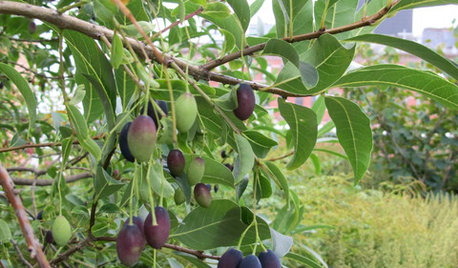Chinese white ash, resistant to emerald ash borer?
nick_b79
14 years ago
Related Stories

LANDSCAPE DESIGNGreat Design Plant: Retreat to the Shade of Hardy Catalpa
Big foliage and a towering height provide a shady respite in summer, but that's not all hardy catalpa offers dedicated gardeners
Full Story
GARDENING GUIDESTree Care: Common Tree Diseases and What to Do About Them
Learn to recognize trees that may be affected by diseases or pests so you can quickly take action
Full Story
GARDENING GUIDESGreat Design Plant: Chionanthus Virginicus
Lacy flowers cover native white fringetree in spring, and birds feed off its berries in winter
Full Story
TREESGreat Design Plant: Downy Serviceberry
Plant this sculptural tree in fall or spring for year-round interest and graceful beauty
Full Story
KITCHEN DESIGN5 Favorite Granites for Gorgeous Kitchen Countertops
See granite types from white to black in action, and learn which cabinet finishes and fixture materials pair best with each
Full Story
KITCHEN DESIGN9 Creative Looks for Kitchen Cabinets
When plain cabinet finishes just won’t cut it, consider these elegant to inventive approaches
Full Story
WINTER GARDENINGHow to Help Your Trees Weather a Storm
Seeing trees safely through winter storms means choosing the right species, siting them carefully and paying attention during the tempests
Full Story
LANDSCAPE DESIGN7 Great Trees for Summer Shade and Fall Color
These landscape-pro faves straddle the seasons beautifully. Could one enhance your own yard?
Full Story
GARDENING GUIDES10 Easy Edibles for First-Time Gardeners
Focus on these beginner-friendly vegetables, herbs, beans and salad greens to start a home farm with little fuss
Full Story
LIFEThe Polite House: How Can I Kindly Get Party Guests to Use Coasters?
Here’s how to handle the age-old entertaining conundrum to protect your furniture — and friendships
Full StoryMore Discussions







nick_b79Original Author
alabamatreehugger 8b SW Alabama
Related Professionals
New Bedford Landscape Architects & Landscape Designers · Salem Landscape Architects & Landscape Designers · Southfield Landscape Architects & Landscape Designers · Apollo Beach Landscape Contractors · Milton Landscape Contractors · Oakland Landscape Contractors · Peoria Landscape Contractors · Seminole Landscape Contractors · Shoreview Landscape Contractors · West Haverstraw Landscape Contractors · Five Forks Siding & Exteriors · Chicago Decks, Patios & Outdoor Enclosures · Fort Mill Decks, Patios & Outdoor Enclosures · Gaithersburg Decks, Patios & Outdoor Enclosures · Surfside Decks, Patios & Outdoor Enclosuresken_adrian Adrian MI cold Z5
nick_b79Original Author
hortster
whaas_5a
lou_spicewood_tx
alabamatreehugger 8b SW Alabama
Embothrium
noki
arbordave (SE MI)
ken_adrian Adrian MI cold Z5
iforgotitsonevermind
arktrees
arbordave (SE MI)
nick_b79Original Author
lkz5ia